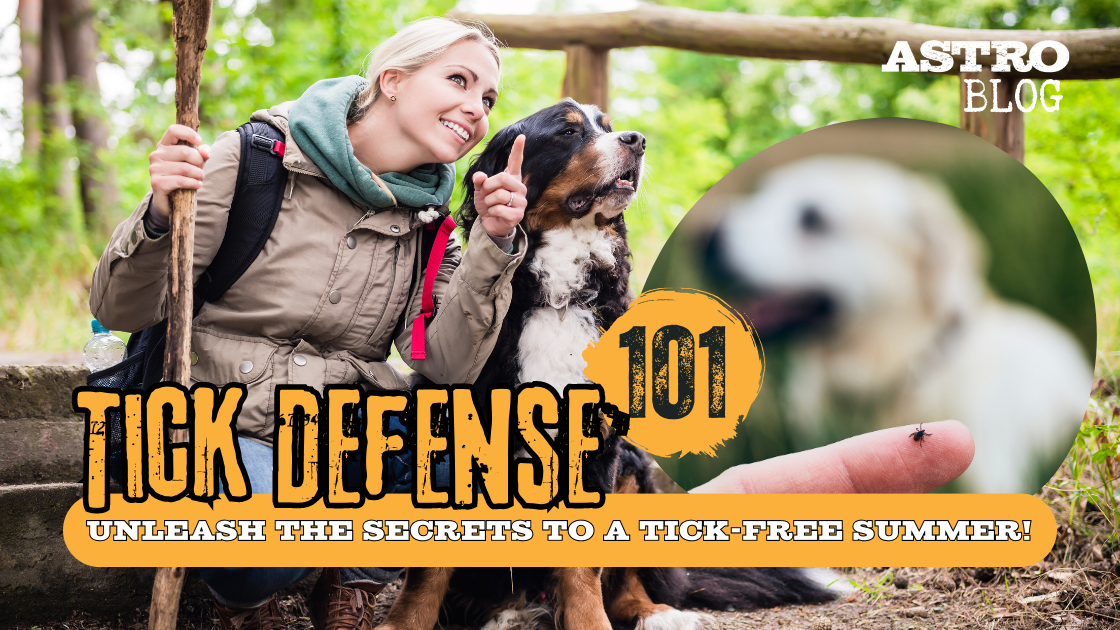Tick bites can bring your summer (and your dog’s) from awesome to awful, but they don’t have to. With proper prevention and observation, you can protect your pet from ticks and tick-borne diseases.
Read on to find out how to keep ticks off your pooch, and the warning signs early if a tick bite does occur.
How to Prevent Ticks
In the spring and summer, the perfect places to walk your dog are grassy areas where you can let them off the leash to enjoy the day. Or perhaps you love to take your dog hiking in wooded areas where you can beat the heat underneath shady trees.
Unfortunately, these areas are also likely to be home to ticks and any potential illnesses they carry. To truly avoid the risk of ticks, you’d have to stay on sidewalks and large walking paths to avoid brushing against any plants that ticks might be on.
However, you can still go on hikes or let your dog roll around in the grass with puppy pals as long as you avoid major tick-risk areas. Places with tall grass, bushes, or plants matter are places where you or your dog are most likely to pick up ticks.
Stay on the Paths to Prevent Ticks
Anywhere where a high number of plants brush against you, or your pet’s legs increases the chances of a tick jumping on. Staying on your hiking trails and keeping your pets on the path will dramatically reduce the possibility of picking up ticks. But you’ll still want to check your dog after any prolonged time in the woods.

Use a Tick Repellent

In terms of repellent, products containing permethrin are recommended by the CDC for treating your clothes and any hiking gear to prevent ticks. Though people may recommend essential oils, the CDC doesn’t have an official recommendation for them. However, it’s worth noting that lemon eucalyptus is an element in several recommended repellents. Your veterinarian, or your local pet shop expert, will have the best advice on specific pet-safe flea and tick preventatives, but most come in an oral or topical treatment.
Signs Your Dog Could Have a Tickborne Illness
During tick season, keep an eye on your pet’s behavior. Tickborne diseases can take a few weeks to show up in dog behavior, but catching them early can help you mitigate the effects. There aren’t vaccines for most of the tickborne illnesses dogs can get, but if you catch the signs and consult your veterinarian, you may be able to get an oral medication prescribed.
Dog behavior that can indicate a tick-borne illness includes:
- Pain
- Lethargy
- Stiffness
- Fever
- Aches
- Rashes

Note that Lyme disease can affect both dogs and people. So if you or your dog start feeling these symptoms after a hike in the woods, it’s time to check everyone for ticks.
How to Check for Ticks
Even if you keep your dog away from heavily wooded areas, there’s always a possibility that they can pick up a stray tick from their adventures rolling in the grass. Because of that, it’s important to regularly check your dog for ticks, daily if possible.
Checking for ticks doesn’t have to be a chore. It can be easily incorporated into your dog’s grooming routine, as you’ll be watching your dog’s fur as you brush.

According to the CDC, the most common places to check your dog for ticks are:
- Ears: Check inside and around the base of the ears.
- Eyelids: The area around your pet’s eye can be a place thin on fur.
- Collar: A tick can hide under your dog’s collar very easily, especially if you don’t make a habit of taking it off to check.
- Legs: Check underneath your dog’s front legs and between their back legs. These less-visible places on your dog can be a good spot for ticks to remain undetected, so keep an eye on them in your inspections.
- Toes: Check between the toes for any irritants, not just ticks, to keep your dog running happily.
- Tail: The area on and around your pet’s tail is another common spot for ticks to get lost in the fur.
How to Remove a Tick
If you find a tick, use clean tweezers to grab it as close to the skin as possible and evenly pull it up. Don’t twist or yank it, or else the mouth of the tick might stay in your dog. Just gradually pull it up and then flush the tick. Safe removal of the tick is important, since it is tick bites are what transmit disease. This means that you can’t catch Lyme disease if your dog is sick with it unless that same tick bites you.
Afterward, wash your hands and the bite area on your dog, and keep an eye on them for signs of infection.

Keep Your Dog Safe From Ticks This Summer
With the appropriate use of pet-safe tick repellents, safe outdoor behavior, and a regular check on your dog’s possible tick locations, you can prevent or catch any ticks that your dogs may find on their summer adventures. Prevention protects your dog just as much as treatment does, so make these behaviors a habit.
For more tips and tricks on keeping your dog’s summer safe and healthy, check out the rest of the Astro Loyalty blog!








